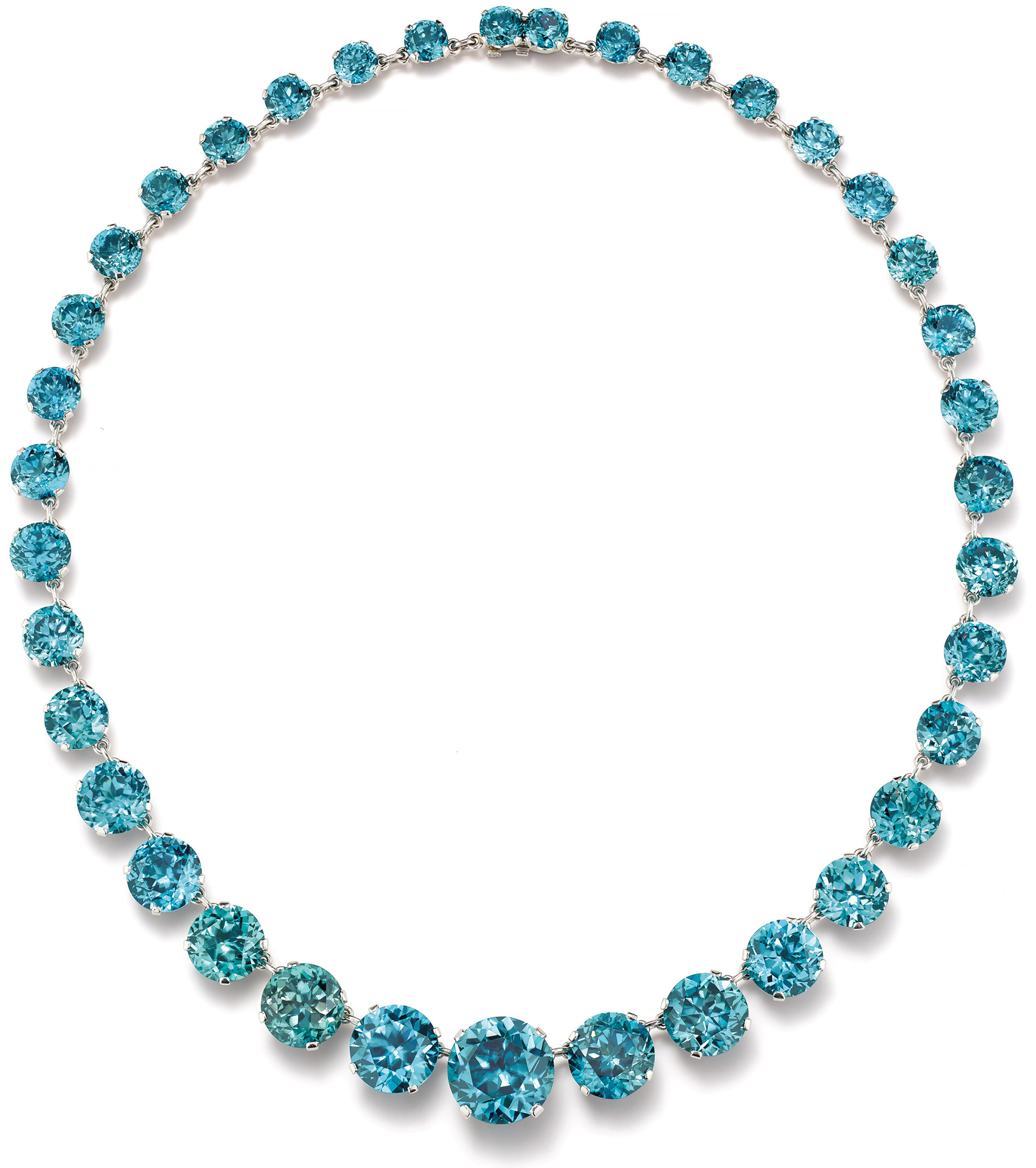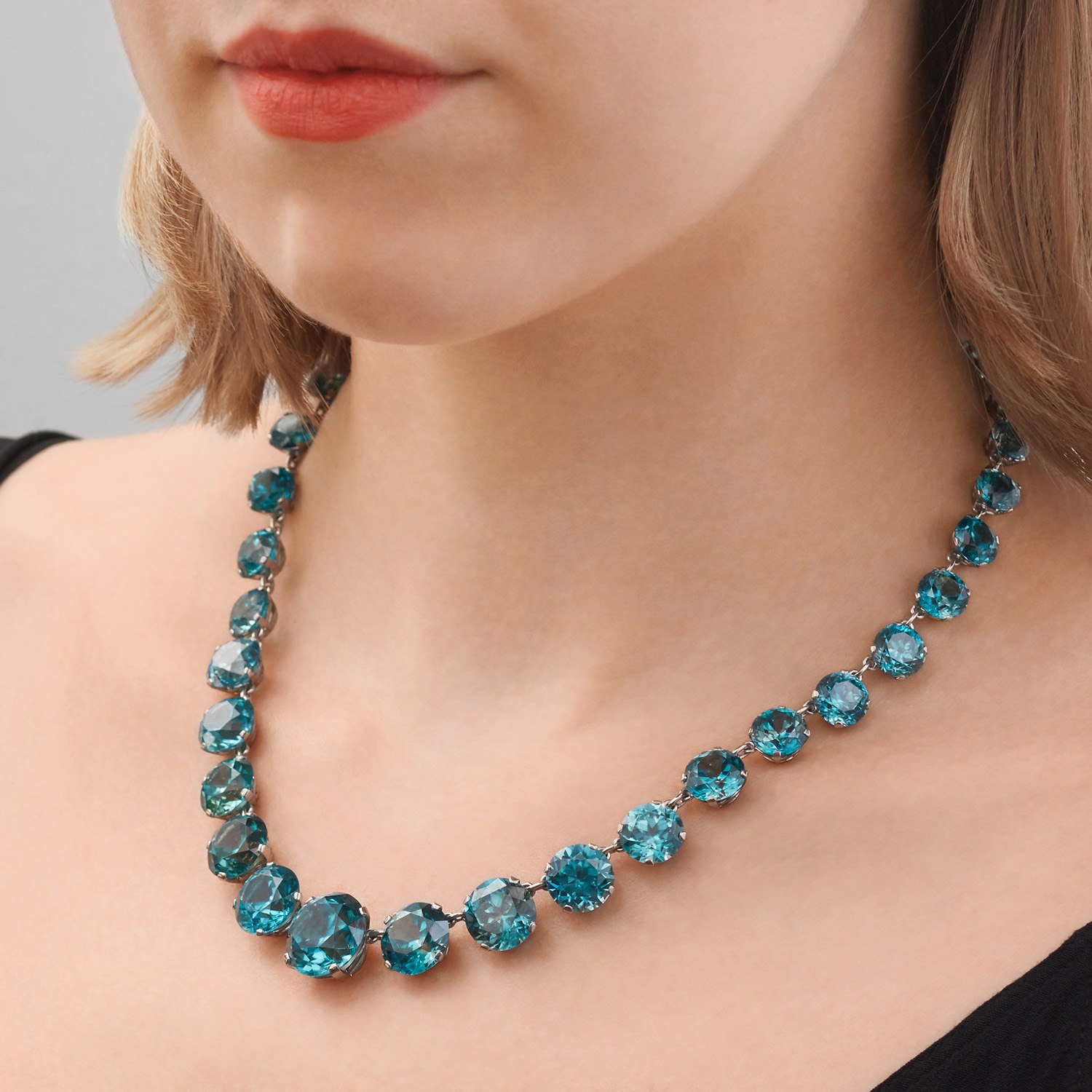





Full-Cataloguing
Zircon
Zircon is a brilliant, beautiful and fiery gemstone with a varied palette of colorless, yellow, green, red, orange, brown and blue. It is the oldest mineral at 4.4 billion years old, an age that coincides with the surface of the earth beginning to cool and crust, and it is found across six continents in metamorphic and sedimentary rocks. Despite its beauty, abundance and rich history, zircon has not reached the demand of more well-known stones like diamond and sapphire. While zircon has trended in jewelry, notably in the Victorian era and in the Art Nouveau designs of Louis Comfort Tiffany, its more unusual attributes make it an enigma to consumers.
One reason for the confusion comes from zircon’s name itself. Scholars believe that the name derives from the Persian word zargun, meaning gold colored, or the Arabic word zarkun, meaning cinnabar or vermilion. Either possibility seems credible given zircon’s color range. Even though the name has deep roots, zircon is often mistaken with the similarly named and more modern cubic zirconia (CZ). To further confusion, both stones possess great luster and fire, aptly suiting them as diamond simulants. Zircon is a more historical simulant source that gave way to other imitations mid-way through the twentieth century, whereas CZ entered the market in the early 1970s and is still a popular simulant today. Although both stones are chemically unique, their similar names, properties and uses in jewelry lead some buyers to believe that zircon is still an imitation diamond rather than a unique and fashionable gemstone in its own right.
Another puzzling attribute of zircon is that some stones contain trace amounts of uranium and thorium, which can break down the stone’s crystal structure and change its properties over long periods of time. This process of irradiation is known as metamictization. Zircons that have suffered extensive damage are typically green and can have much lower specific gravity, refractive index and double refraction than those with stable crystal structures. Though this process is harmful to the stone, buyers should not worry about it posing health concerns to the wearer since the amount of radioactive elements is too low. Furthermore, the irradiation process in many metamict zircons can be reversed by heating the stone to high temperatures thus restoring its crystalline form.
Although zircon is sometimes mystifying to consumers, it is making a resurgence in the market. Its bold colors and strong dispersion make it a favorite among designers and can be seen in innovative and exquisite works by JAR, Hemmerle, Nicholas Varney and Lauren Adriana.
Lot 188 is a brilliant and well-matched electric blue zircon riviera necklace comprised of 37 stones, totaling over 160 carats. As plentiful as zircon is, its availability in large crystals is uncommon, making the center stone of 18.94 carats, with its high clarity and alluring shade of blue a rare and lovely example of the mineral.
Zircon is a brilliant, beautiful and fiery gemstone with a varied palette of colorless, yellow, green, red, orange, brown and blue. It is the oldest mineral at 4.4 billion years old, an age that coincides with the surface of the earth beginning to cool and crust, and it is found across six continents in metamorphic and sedimentary rocks. Despite its beauty, abundance and rich history, zircon has not reached the demand of more well-known stones like diamond and sapphire. While zircon has trended in jewelry, notably in the Victorian era and in the Art Nouveau designs of Louis Comfort Tiffany, its more unusual attributes make it an enigma to consumers.
One reason for the confusion comes from zircon’s name itself. Scholars believe that the name derives from the Persian word zargun, meaning gold colored, or the Arabic word zarkun, meaning cinnabar or vermilion. Either possibility seems credible given zircon’s color range. Even though the name has deep roots, zircon is often mistaken with the similarly named and more modern cubic zirconia (CZ). To further confusion, both stones possess great luster and fire, aptly suiting them as diamond simulants. Zircon is a more historical simulant source that gave way to other imitations mid-way through the twentieth century, whereas CZ entered the market in the early 1970s and is still a popular simulant today. Although both stones are chemically unique, their similar names, properties and uses in jewelry lead some buyers to believe that zircon is still an imitation diamond rather than a unique and fashionable gemstone in its own right.
Another puzzling attribute of zircon is that some stones contain trace amounts of uranium and thorium, which can break down the stone’s crystal structure and change its properties over long periods of time. This process of irradiation is known as metamictization. Zircons that have suffered extensive damage are typically green and can have much lower specific gravity, refractive index and double refraction than those with stable crystal structures. Though this process is harmful to the stone, buyers should not worry about it posing health concerns to the wearer since the amount of radioactive elements is too low. Furthermore, the irradiation process in many metamict zircons can be reversed by heating the stone to high temperatures thus restoring its crystalline form.
Although zircon is sometimes mystifying to consumers, it is making a resurgence in the market. Its bold colors and strong dispersion make it a favorite among designers and can be seen in innovative and exquisite works by JAR, Hemmerle, Nicholas Varney and Lauren Adriana.
Lot 188 is a brilliant and well-matched electric blue zircon riviera necklace comprised of 37 stones, totaling over 160 carats. As plentiful as zircon is, its availability in large crystals is uncommon, making the center stone of 18.94 carats, with its high clarity and alluring shade of blue a rare and lovely example of the mineral.